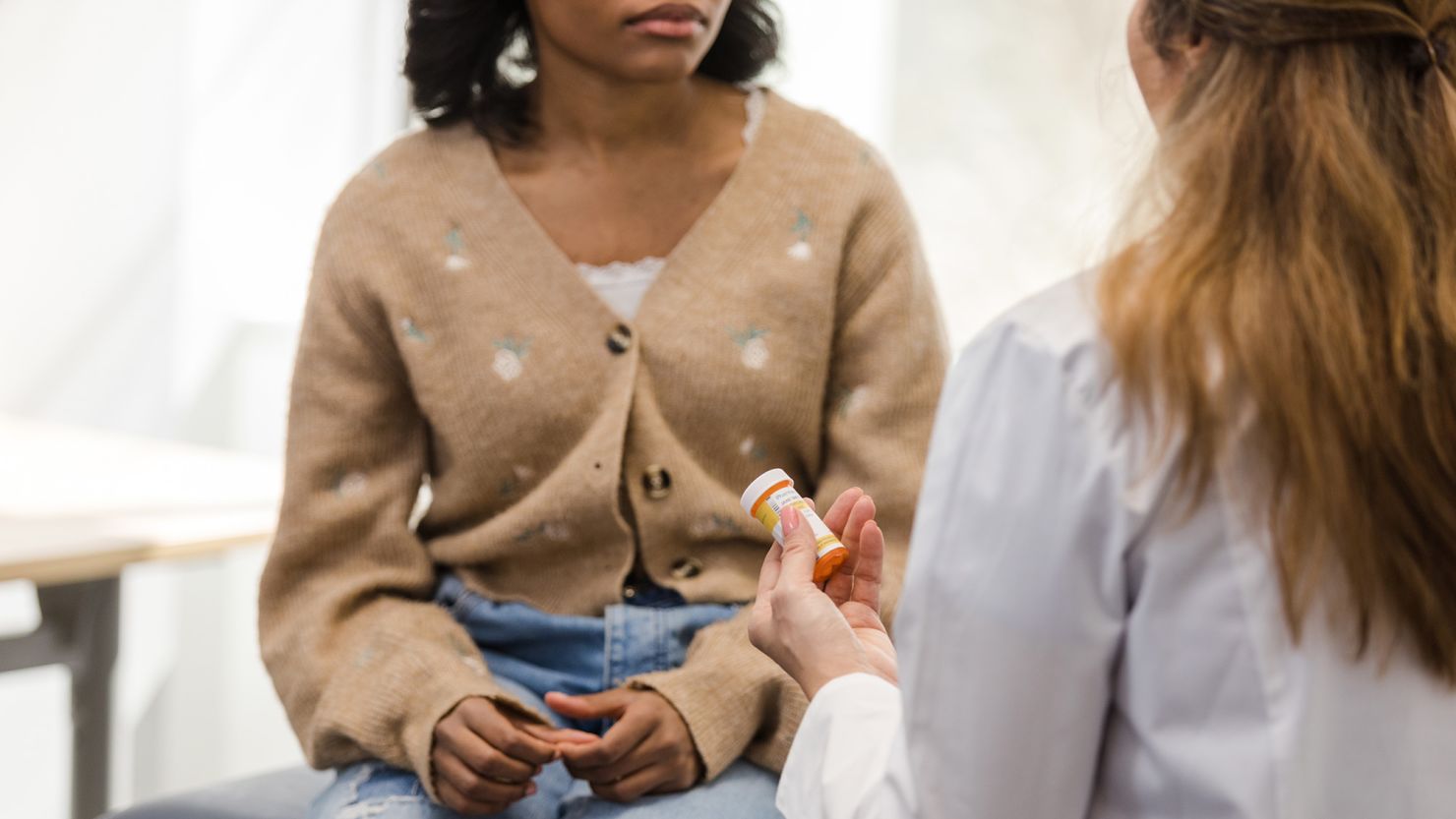Sign up for CNN’s Stress, But Less newsletter. Our six-part mindfulness guide will inform and inspire you to reduce stress while learning how to harness it.
Many young people have reported having poor mental health during and after the Covid-19 pandemic. Their experiences are affirmed by a new study finding that the rate of prescribing antidepressants to this group also spiked during the same period.
The number of young people between the ages 12 and 25 receiving antidepressants was already growing before the pandemic. But since the Covid-19 outbreak in the United States in March 2020, the dispensing rate rose nearly 64% faster than normal, according to the study published Monday in the journal Pediatrics. (Dispensing, in the context of this study, refers to antidepressants given to patients by retail, mail-order or long-term care pharmacies; it doesn’t reflect use of the medications once purchased.)
“The differences by sex are by far the thing that stood out to me the most,” the study’s first author, Dr. Kao-Ping Chua, said of the findings. Chua is a primary care pediatrician and assistant professor of pediatrics at the University of Michigan’s School of Public Health.
In female adolescents ages 12 to 17, the dispensing rate increased 130% faster after March 2020, Chua said. For female young adults ages 18 to 25, the rate spiked by 60%.
“In stark contrast,” Chua added, “what we see is essentially no change in antidepressant dispensing rate after March 2020 in male young adults, and a surprising decline in antidepressant dispensing rate in male adolescents.”
A few earlier studies assessed changes in the post-pandemic dispensing rate nationally, but to the authors’ knowledge, the new study is the first one specific to adolescents and young adults, and to analyze data beyond 2020.
“I found myself, during the pandemic, prescribing antidepressants at rates that I never had before,” said Chua, who decided to conduct the research to help inform the conversation about the country’s youth mental health crisis.
“I can’t tell you how many pediatricians have told me that they feel like they’re just mental health clinicians at this point,” he said.
From 2016 to 2022, Chua and his coauthors found the monthly dispensing rate increased by 66.3%, a trend that surged during and after the pandemic, using the IQVIA Longitudinal Prescription Database. The IQVIA database is a long-term patient prescription database based on retail pharmacy data.
“By the second year of the pandemic, emergency room visits for poor mental health in youth rose, and we saw an uptick in visits for suicide attempts or self-harm especially among female adolescents,” said Dr. Neha Chaudhary, a child and adolescent psychiatrist at Massachusetts General Hospital and chief medical officer at Modern Health, a mental health care platform for companies supporting their employees. She wasn’t involved in the study.
“As a child and adolescent psychiatrist who has closely witnessed the impact of the pandemic on youth mental health, the results of the study are unsurprising,” Chaudhary said via email.
The stressors affecting kids
The authors can’t fully explain the findings. But in the context of worsening mental health among youth, “it tracks that we’d see a similar trend in rates of antidepressant prescriptions as these medications are often part of the treatment course for moderate-to-severe cases of mental health conditions like depression,” Chaudhary said.
Additionally, growing awareness of mental health, and thus reduced stigma, has led more young people to seek help, she added, as well as exposure to negative current events.
On top of those things and pandemic stressors such as loss of loved ones, transition to virtual learning and the lack of social life, some unique factors regarding the state of mental health care during the pandemic may have to do with the increased rate of dispensing antidepressants.
Getting and staying on an antidepressant prescription became easier due to the rise of telehealth since patients previously had to visit their providers in person, Chua said.
But that benefit had its drawbacks. In normal times, for patients with mild or moderate depression, providers would often recommend a trial of therapy without medication, Chua said. But during the pandemic, the unprecedented demand for virtual therapy resulted in long wait times, making the therapy-only recommendation less feasible. As a result, there was an increased tendency for providers to prescribe antidepressants as a bridge since they couldn’t assume patients could quickly begin therapy.
The differences in the findings among male adolescents or young adults don’t prove their mental health improved — they may just point to males increasingly disconnecting from the mental health system, which is “a really concerning possibility,” Chua said.
Choosing the best treatment
Experts discouraged stigmatizing the need for, or use of, the medications. Antidepressant use is common, Chua said, “and you shouldn’t feel weird about taking them if you need them.”
“These medications are extremely effective in many cases,” he added. “They allow people to feel a little bit more normal and to withstand the highs and lows of life. People’s quality of life, their mood and rates of self-harm improve a lot.”
In some cases, antidepressants can even be lifesaving, Chaudhary said.
However, “there are understandable concerns regarding antidepressants,” Chua said. “They’re not something you start trivially. For young people, there’s a (US Food and Drug Administration) black box warning about increased suicidal thoughts after starting antidepressants.”
Potential side effects typically alleviate within a couple of weeks or so; if they don’t, a provider may recommend a different medication.
But given the risks, “parents really have to be willing to have a frank discussion about the pros and cons of antidepressants when their kids are having mental health concerns, and honestly, not just shut it down or push them either way,” Chua said.
Drastic changes in children’s behavior or mood — such as with their sleep, social life, attitude, school performance, ability to concentrate or interest in activities — may signal a need for antidepressants, but a pediatric psychiatrist can recommend the best treatment plan and answer any questions about medications, experts said.
READ MORE: Moodiness or more? How to tell if your kid’s suffering from a mental disorder
Know that antidepressants are typically only started when the benefits outweigh the risks, Chaudhary said.
“Young people are struggling, and it’s on us to help them,” Chaudhary said. “If you are a young person or have one in your life, consider checking in on how things are going. It just takes one person who cares to change the trajectory of someone’s life.”








